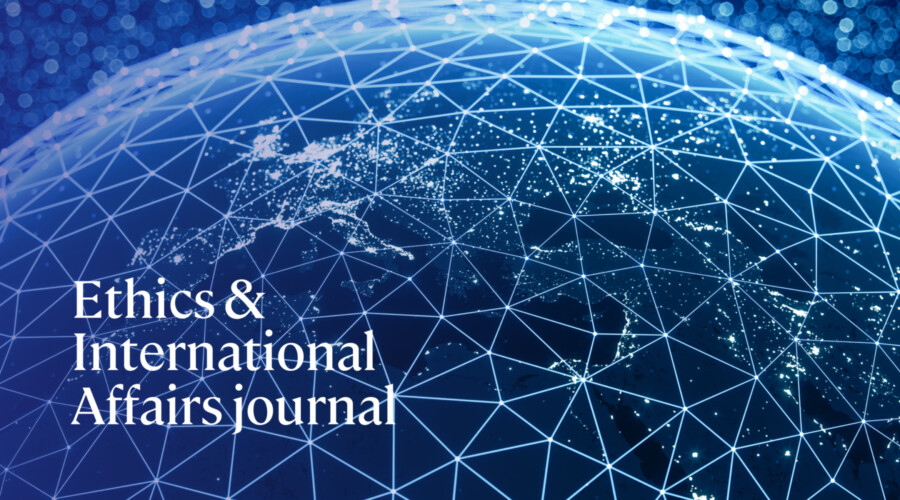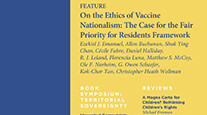Peter Van Der Veer (reviewer)
The Clash Within is a lengthy account of the rise of the Hindu right and of anti-Muslim violence in contemporary India. There is little in the book that strikes the specialist as new or original, since the events and arguments it deals with are well known and extensively dealt with in the existing literature, but the author wants to address a wider audience. Nussbaum argues that her contribution is as that of a loudspeaker, since she feels that Indian developments are wrongly ignored in the United States and Europe. In her view, the reason for this neglect is "the way in which terrorism and the war on Iraq have distracted Americans from events and issues of fundamental significance" (p. 1). This is not self-evident, since one might plausibly contend that Iraq and the Middle East (including Israel) rightly attract more attention and are of more fundamental significance for American foreign policy than Hindu-Muslim antagonism in India. However, Nussbaum's argument is not located at the level of geopolitics, but at the level of national political systems. She argues that the problem of how religious nationalism affects the largest democracy in the world is instructive for all democracies. From a philosopher one might expect a theoretical argument about democracy, nationalism, and religion to frame what we can learn from the Indian case, but Nussbaum's book surprisingly offers more journalism than theory.
The book begins with the horrendous anti-Muslim pogrom in Gujarat under the Bharatiya Janata Party (BJP) government of Narendra Modi in 2002, in which thousands of Muslims lost their lives and property. It shows that the courts of India have not been able to deal in a fair way with this state-supported violence. There has not been legal redress for the victims, and the culprits have not been brought to trial. The book continues with a set of interviews of leaders of the Hindu right, which are juxtaposed with a set of narratives of the lives and deeds of Tagore, Gandhi, and Nehru, great men of India's struggle for independence. Nussbaum's sympathies lie with Tagore's humanistic vision of India's civilization without taking fully into account that whereas he was a poet, Gandhi and Nehru were political activists. These vignettes are followed by an analysis of the legal and constitutional institutions that have to sustain India's democracy. Although Nussbaum brings up a great number of cases in which the legal system does not function properly, she has chosen to limit herself to an analysis of legal principles and the contradictions therein, and does not explore the much more important problem of the increasing inability of the legal system to function, which would require a political sociology of politics, law courts, police, and their relations. Nussbaum continues her story with an interpretation of the rise of the Hindu right, especially of the fascist Rashtriya Swayamsevak Sangh (RSS) and the BJP. The book ends with insightful chapters on the controversies about the writing of national history, on the dismal situation of the Indian education system, and on the Hindu diaspora community in the United States.
The only chapter in which Nussbaum develops a strong argument is the one in which the sexual fantasies about Muslims and rapist aspects of the violence against them are discussed. Here she uses her own work on emotions and on psychoanalysis, underlining that the argument is humanistic and cannot be empirically verified. The materials she analyzes are Hindu myths from the Sanskrit tradition and the symbolism of Hindu nationalism. She points out how important demographic fears have been since colonial times in fostering the idea that Muslims procreate wildly and Hindus are a dying race. Less clear is how these fears have been rekindled so long after Partition to form the background to the terrible rapist events in Gujarat. She further argues that shame is central in creating group violence and connects this to Freudian suggestions about primitive shame and disgust. This is an extraordinarily complex field, but it seems to me that blanket Freudian arguments about rape and other forms of violence, without a detailed discussion of the actual cases and the ways in which the victims and perpetrators build narratives around these events, tend to essentialize cultures and do not help us to get to a more refined understanding of the agency of the people involved. An additional difficulty is that there is a great difference between a Freudian analysis of ancient Greek myths, which are part of a civilization of the past, and a Freudian analysis of the living faith of millions of people who are very sensitive to what they feel are derogatory observations due to a long experience with Orientalist and missionary attacks on their civilization.
Nussbaum has written a passionate book out of love for India and out of a desire for a society in which people have equal respect for each other. The book, however, neglects major elements of Indian reality and is thus unable to convince. First of all, it is a very Hindu book. In vain one looks for Muslim voices, as if the threatened minority does not have a say in the interpretation of what the majority thinks about it. Rather, the presentation seems to suggest that Islam and Christianity are not part of Indian civilization. Second, it is very much a book written from the perspective of the Bengali elite with which Nussbaum identifies, primarily via Nobel Prize–winning economist Amartya Sen's family, with whom she has a longstanding relationship. While we hear a lot about Hinduism, it is a Sanskrit-based Brahmanical Hinduism, not the folk Hinduism of the larger part of the population. Given the enormous rift between the English-speaking elite who dominate the academic and bureaucratic world and the vernacular-speaking groups that are central to Indian politics, Nussbaum seems to commit the same error she accuses Nehru of: condescension toward the ignorant masses. Moreover, Nussbaum ignores the importance of the relation between regional politics and national politics. Somehow she seems to believe that the Congress Party is the positive alternative to the Hindu right, but she misses the extent to which the Congress Party tries to cater to the same sentiments as the BJP. The attack on the mosque in Ayodhya, which is the focal point of religious nationalism, took place when Congress was in power.
Third, the book is surprisingly silent about the economic background to the political developments in India, especially the connection between neoliberal reform and religious nationalism. This could have been a major point of comparison with the developments in the United States under the Bush administration, but Nussbaum misses an opportunity here to make India relevant to an American readership. Finally, Nussbaum has decided to leave the Kashmir issue out of the picture, as well as relations between Pakistan and India, since in her view they are not related to the events she describes in the book. She contends, moreover, that there is no Islamic fundamentalism in India (p. 5). These assumptions are all simply wrong. The attacks on the Indian Parliament and on the Indian Institute of Science in Bangalore in the last few years, the relations between the Taliban and the Deobandi school in India, and the deep history of the Partition and the role of Pakistan in destabilizing India are among the many examples one can bring up to show why they are wrong.
It would have been wonderful if someone with the erudition of Nussbaum would have turned her attention to fundamental problems in the transformation of religion in democratic systems. This would have allowed one to examine not only the similarities between the Indian and American cases, but also the similarities and differences with an undemocratic system, such as that of China. Unfortunately, for whatever reasons, The Clash Within does not address such fundamental issues.
—PETER VAN DER VEER
Utrecht University


